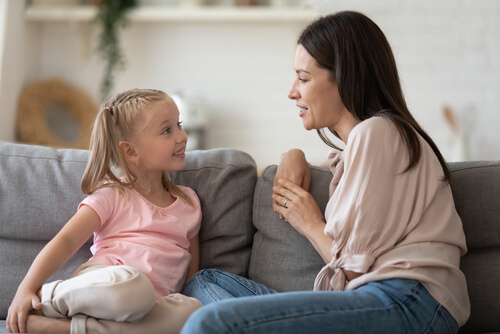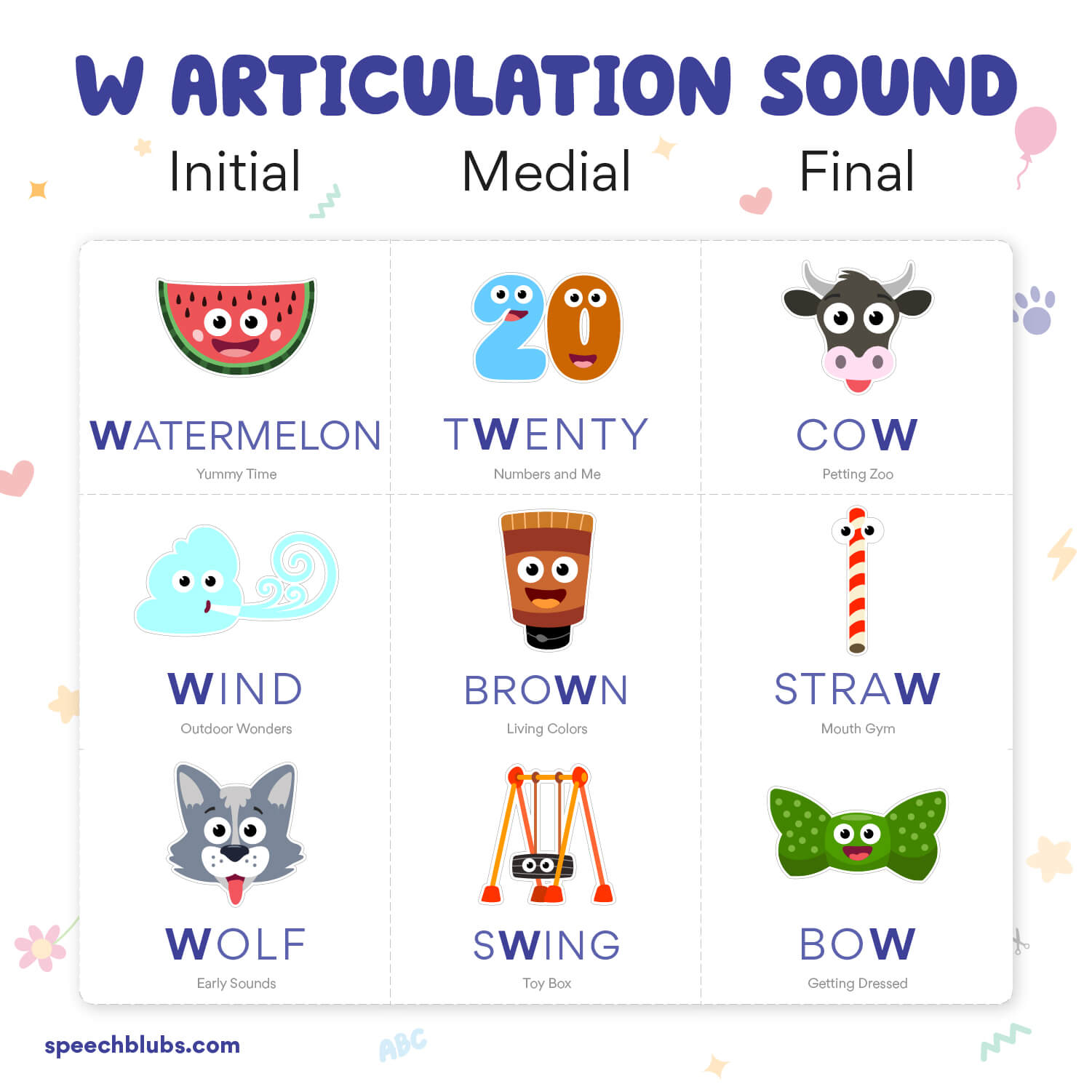Articulation Therapy: The Wondrous “W” Sound
Jan 15, 2022 The /w/ sound is considered a glide or a semivowel sound by speech-language pathologists. In other words, /w/ sounds a lot like a vowel and sometimes even acts like one, even though it is technically a consonant.
To make a /w/ sound, form a tight circle with puckered lips brought out and away from your face. With your lips in this position, produce a sound with your vocal cords while holding the back of your tongue towards the roof of your mouth, near the back.
Although it sounds pretty complicated, the /w/ sound is one of the first sounds that kids develop. Typically, you will start hearing your child say this sound successfully around the age of 2 and should be using it consistently and accurately by the age of 3. If by age 4 your child isn’t producing /w/ correctly or starts substituting it with other sounds, then you may want to seek out a speech-language pathologist to address articulation!
Remember, the sooner you address a problem, the quicker the issue can be addressed and the less likelihood it will affect the production of other sounds. That said, it is common and natural for children to interchange the /r/ sound for the /w/ sound, such as saying “wabbit” or “wight” for “rabbit” or “right” through ages 6-7.
So what are some ways to address errors in your child’s speech. Whether it’s the /w/ sound or any other letter, you want to address the sound in all positions of words. This means, you should work on the sound in the beginning, middle and final position. Just because they can master it at one position, doesn’t mean they will grasp it in another!
There are also several types of cues that you can provide to your child when they are at home. These cues are verbal, visual and tactile.
Verbal cues
Verbal cues are exactly what they sound like; giving your child corrections and demonstrations with your voice.

When you practice with your little one, it is important to demonstrate the sound clearly and correctly so that your child understands the sound and has an accurate source to imitate.
Slowly make the /w/ sound for your child, exaggerating the movement on your mouth. Repeat this until your child begins to imitate you. Once they have mastered the individual sound, try combining it with vowels to form simple syllables, like “we, we, we” and “ew, ew, ew”.
Visual Cues
Visual cues are when you give your child a picture or tell them to look at something when they are attempting to create a sound. This can be as simple as pointing to your mouth when making a sound. You can even give them a mirror so they can see what is happening in and around their mouth.

When your mouth makes the /w/ sound, it happens to look a lot like you are about to kiss someone. Begin by practicing kisses with your little one and focusing on helping her to bring her lips together in a tight ‘O’. Blow kisses, kiss the air, kiss each other. Then point to your lips and make a new sound – the /w/ sound.
Tactile Cues
Tactile cues are those that involve touch. If your child can’t pucker their lips, you may need to physically touch their mouths and put their lips in the correct position.
The /w/ sound is also a voiced sound. This means that it vibrates your vocal cords when you say it. Put your hand on your throat as you make the /w/ sound to feel this, and let your little one put their hand on your throat too. Then encourage her to place her hand on her own throat as she says the sound.
I would also highly suggest you download Speech Blubs. They have a fun mouth gym that will allow your child to practice their speech sounds in a fun, stress-free environment!
Show Visual and Audio Cues with the Help of Speech Blubs
Speech Blubs App has multiple activities that you can use to target specific speech sounds. The games are fun and highly engagable so your child won’t even realize that they are working on speech sounds!
Boost Your Child’s Speech Development!
Improve language & communication skills with fun learning!

To practice making the W consonant here is the list of sections and words in them that you can practice with your child:
- Early Sounds: Growl, Caw, Pawoo, Hee Haw, Tweet, Meow, Woof, Nee Naw.
- Petting ZOO: Cow.
- Outdoor Wonders: Winter.
- Living Colors: Brown, White, Yellow.
- Yummy Time: Watermelon, Water.
- Numbers and me: Two, Twelve, Twenty.
- Toy Box: Swing.
How To Play Articulation Bingo?
- Use the button below to download our Articulation Bingo Board
- Print out the board and give it to your child or cut out the pictures and put them into a bag
- Let your child pick a word from the board / bag
- Find the word in Speech Blubs App and practice it, play with fun filters and watch educational videos
- Your child is a winner when he practices three pictures in a row (across, down, or horizontally) or the entire board
If your child has difficulties with other sounds, here are the articles that can help you with speech therapy and articulation activities ideas:
- Articulation Therapy: An All-in-One Guide for Parents
- B Sound Articulation Therapy
- H Sound Articulation Therapy
- JJ and CH Sounds Articulation Therapy
- L Sound Articulation Therapy
- Lisp Articulation Therapy
- M Sound Articulation Therapy
- N Sound Articulation Therapy
- NG Sound Articulation Therapy
- R Sound Articulation Therapy
- S Sound Articulation Therapy
- SH Sound Articulation Therapy
- T and D Sounds Articulation Therapy

